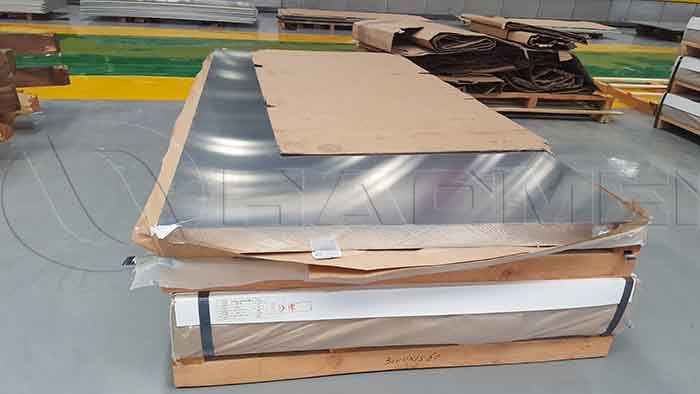AA 5083 and 5059 Aluminum Tanker Plate
Energy saving, emission reduction and structural lightweight have become a global trend. Compared with steel, aluminum alloy tank trucks have the characteristics of low density, good corrosion resistance, easy welding, long service life, easy recycling, reduced emissions, and no charge accumulation. In recent years, the use of aluminum and its alloys in the automotive industry has become more and more widespread. The alloys of aluminum plate for tankers are usually AA5083 and 5059 aluminum sheet.
5083 aluminum alloy is an aluminum alloy containing magnesium and trace amounts of manganese and chromium. It is highly resistant to seawater and industrial chemicals. The cylinder body of the oil tanker is welded with 5083 alloy, and the plate thickness is 5mm~6mm. The baffles and bulkhead also adopts this alloy. The wall thickness of the head is equal to or greater than that of the tank body, and the thickness of the baffle and bulkhead is 1mm thinner than that of the tank body.

Both the 5754 aluminum plate and the 5083 aluminum plate belong to the aluminum-magnesium alloy. The main difference between the two is the magnesium alloy content, hardness and elongation. The magnesium alloy content of the 5754 aluminum plate is around 3%, and the magnesium alloy content of the 5083 aluminum plate is as high as around 4.5%. , At the same time, the hardness of 5083 aluminum plate is higher than that of 5754 aluminum plate. Of course 5083 aluminum plate price is also higher than 5754 aluminum sheet.
5059 aluminium sheet belongs to 5xxx Al-Mg aluminum sheet, which has high strength, high plasticity and corrosion resistance, good weldability, and low crack tendency. With its unique advantages, it is widely used in special tank trucks for petrochemical and other dangerous goods.
The corrosion resistance of 5059 alloy is better than that of 5083 alloy. The surface structure of 5083 alloy is partially recrystallized structure and deformed fibrous structure, and the precipitates are continuously distributed in the grain boundary, which is not conducive to the corrosion resistance of the alloy. The Zn content of the 5059 alloy is relatively high, the surface structure is a completely recrystallized structure, and the precipitates are uniformly dispersed and intermittently distributed, which is beneficial to the corrosion resistance of the alloy.
The optimal homogenization heat treatment process for 5059 aluminum sheet is 460℃×24 h. As the homogenization temperature of the alloy increases, the second phase with low melting point dissolves rapidly, but at 480°C, an overburned structure appears in the alloy matrix. When the homogenization temperature is 460°C, after holding for 24 hours, the β phase in the original as-cast alloy dissolves back to the matrix to a large extent, and at the same time, the inhomogeneous structure and dendritic network structure are basically eliminated.
Original Source:https://www.aluminumtankerplate.com/a/aa-5083-and-5059-aluminum-tanker-plate.html
Tags: aluminium plate for tankers ,
